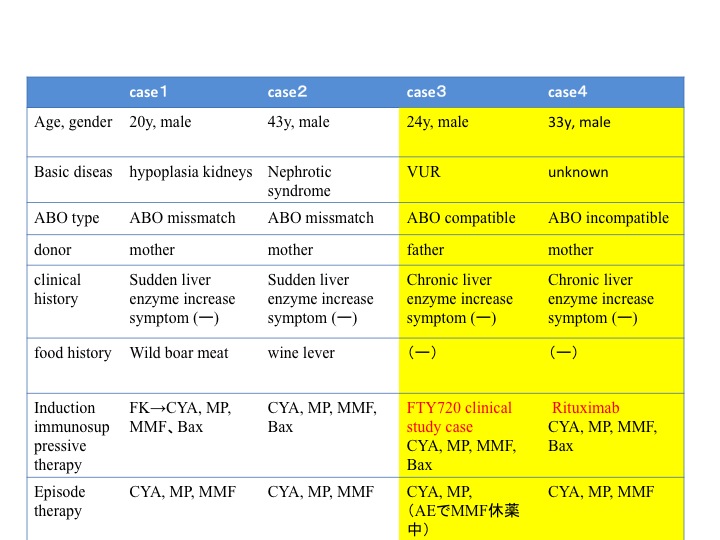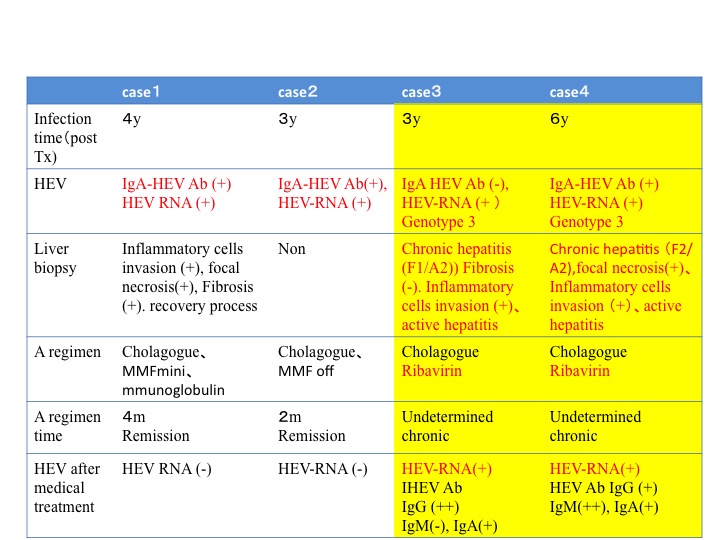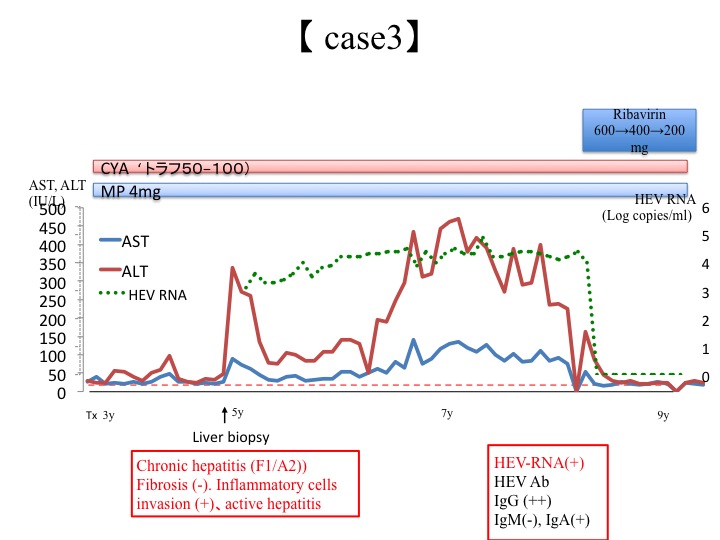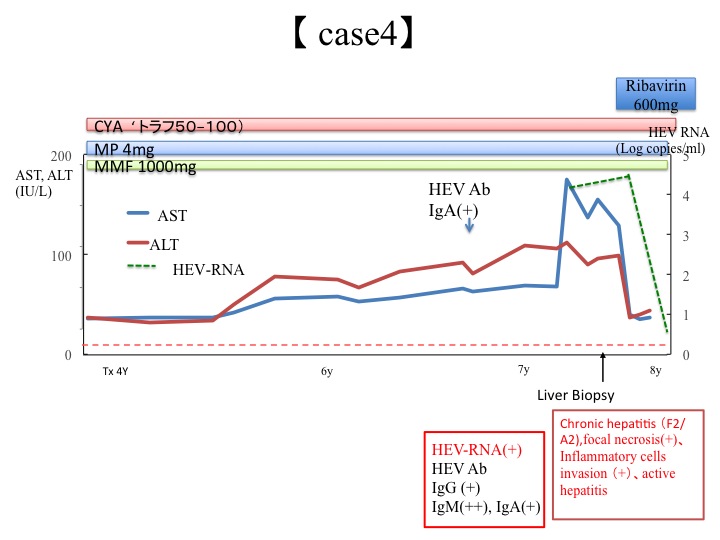The Examination of Hepatitis E after Renal Transplantation
Yuki Nakagawa1,2, Kazuhide Saito1, Masayuki Tasaki1, Kota Takahashi1,3, Yohei Owada4, Yukio Ohshiro4, Nobuhiro Ohkohchi4, Hiroaki Okamoto5, Yoshihiko Tomita1.
1Department of Regenerative and Transplant Medicine, Niigata University, Niigata, Japan; 2Department of Urology, Uonuma Institute of Community Medicine Niigata University, Niigata, Japan; 3Otukadai Clinic, Otukadai Clinic, Tokyo, Japan; 4Department of Gastrointestinal and Hepato-Biliary-Pancreatic Surgery, , University of Tsukuba, Ibaragi, Japan; 5Department of Infection and Immunity, Jichi Medical University , Tochigi, Japan
Japan Agency for Medical Research and Development"An oral hepatitic group".
Hepatitis E is identified as a zoonosis with a natural reservoir in pigs.
Hepatitis E virus (HEV) infection attracted close attention in Japan after the fatal case of patient with hepatitis E was reported in 2002, and after that reports of clinical HEV the hepatitis E infection increased rapidly. Infection via blood transfusion leads to further increased medical concerns. Subclinical infection is the most common situation, while rare cases of HEV infection develop subacute hepatitis, which resultsed in complete recovery. There were no data on chronic hepatitis E until recentlynow. However, in organ- transplantedation patients receiving immunosuppression therapy there is a possibility of chronicityzation and these patients need close attention.
Here we report on 4 cases who developedin which hepatitis E developed after kidney transplantation and were diagnosed inat our institution. 2 cases of those remitted as acute hepatitis immediately. However 2 cases (case3 and 4) that take become the chronic hepatitis and do not heal.

Chronic hepatitis cases that used an intensive immunosuppressive drug such as Rituximab and FTY720 compared with induction immunosuppressive therapy of the standard cases. Furthermore 2 cases that became the E type chronic hepatitis, lymphocyte counts of the peripheral blood and immunoglobulin were lighter than the standard acute hepatitis cases. For episode time, all cases are 3-6 years after renal transplant. The case that became the chronic hepatitis needed time-temperature tolerance until diagnosis was turned on. Therefore infection time and the route of infection are not clear.

It is more difficult a treatment of chronic hepatitis cases than the standard acute hepatitis cases. When the patients of particularly intensive immunosuppression show the increase of the mild liver enzyme, we suspect HEV infection positively and should check HEV RNA.
We thoroughly investigated potential route of HEV infection and present detailed clinical course in our cases. There will be the need to elucidate measures, treatment strategy in future by determining the route of infection of the hepatitis E in renal-transplant recipients of our country and presence of the chronicity.
